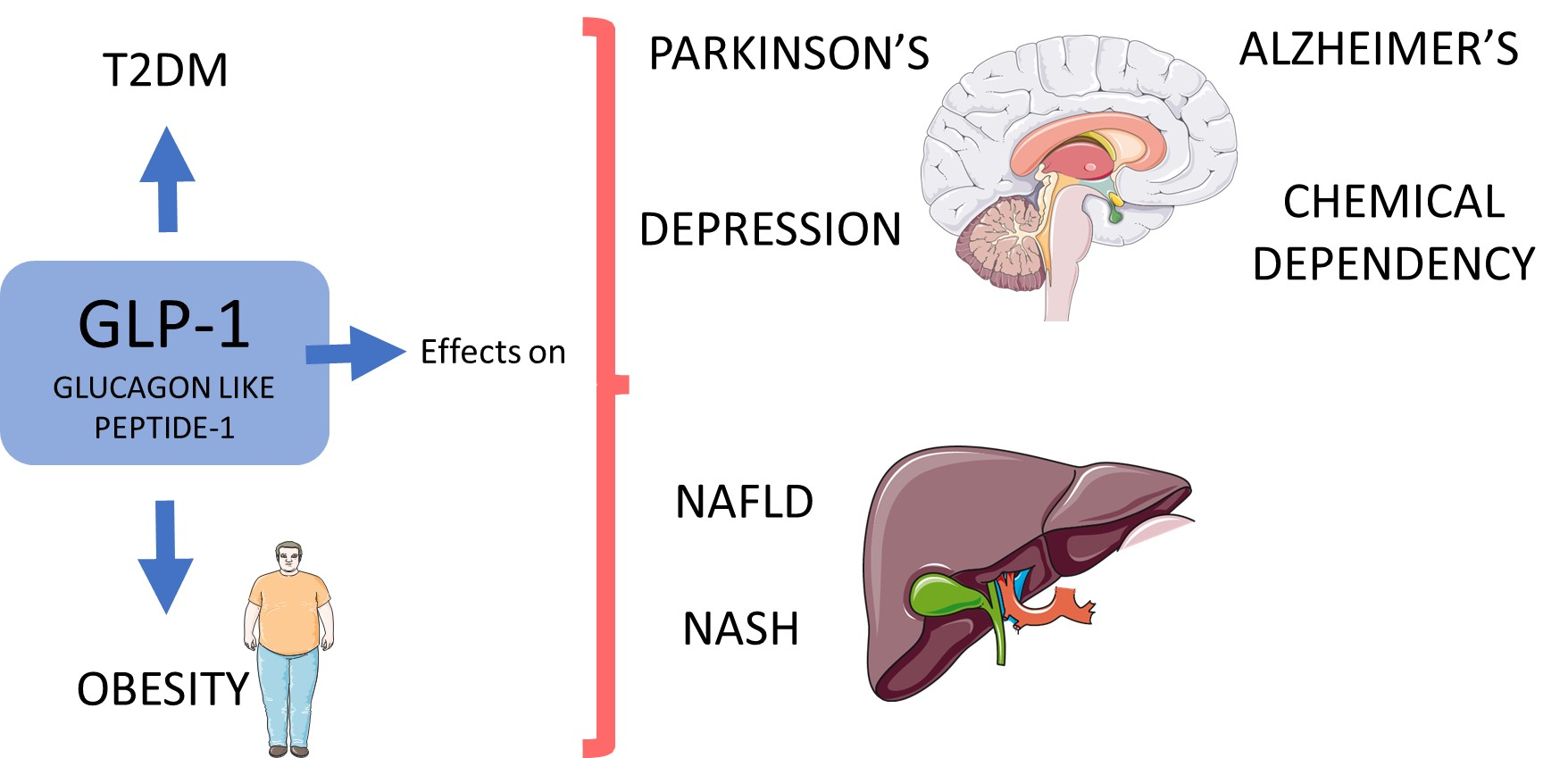These medications, which mimic the action of the naturally occurring hormone GLP-1, not only help lower blood sugar levels but also have effects on weight loss and cardiovascular health. As their popularity grows, so does the public's curiosity about how they work, their benefits, and their potential side effects. This article dives into the 20 most crucial aspects of GLP-1 receptor agonists, offering insights into what makes them a significant advancement in medical science.
| Mechanism of Action |
 |
| GLP-1 receptor agonists, including Ozempic, work by mimicking the incretin hormone GLP-1, which is naturally produced in the gut after eating. This stimulation helps in lowering blood glucose levels by enhancing insulin secretion, reducing the release of glucagon (a hormone that raises blood sugar levels), and slowing gastric emptying. This comprehensive action helps in the effective management of type 2 diabetes. |
| Weight Loss Benefits |
 |
| A remarkable and often welcome side effect of GLP-1 receptor agonists is weight loss. These medications can help reduce appetite and food intake by slowing stomach emptying and affecting brain regions that control appetite. This makes them not only valuable for managing diabetes but also for aiding weight loss in people with obesity. |
| Cardiovascular Advantages |
 |
| Studies have shown that certain GLP-1 receptor agonists can reduce the risk of major cardiovascular events, such as heart attack and stroke, in people with type 2 diabetes and existing cardiovascular disease. This adds a protective cardiovascular benefit to their profile, offering more than just glucose control. |
| Side Effects and Management |
 |
| Common side effects include gastrointestinal issues such as nausea, vomiting, diarrhea, and constipation. These side effects are generally mild to moderate and decrease over time. Starting with a low dose and gradually increasing may help minimize side effects. |
| Differences Among GLP-1s |
 |
| Not all GLP-1 receptor agonists are the same. They differ in their chemical structure, duration of action (some are taken daily, others weekly), and their effects on weight loss and cardiovascular risk. This variety allows healthcare providers to tailor treatment to the individual patient's needs. |
| Injection Sites and Techniques |
 |
| GLP-1 receptor agonists are administered via injection. Proper injection techniques and rotating sites can help minimize discomfort and skin irritation. It's essential for patients to receive proper instruction on how to administer these medications. |
| Contraindications and Precautions |
 |
| While GLP-1 receptor agonists are safe for many, they're not suitable for everyone. They are contraindicated in individuals with a history of medullary thyroid carcinoma or patients with a family history of multiple endocrine neoplasia syndrome type 2. Precautions should also be taken in patients with a history of pancreatitis. |
| The Role in Diabetes Prevention |
 |
| For individuals with prediabetes or at high risk of developing type 2 diabetes, GLP-1 receptor agonists can be part of a preventive strategy. They can help lower blood sugar levels and support weight loss, potentially delaying or preventing the onset of diabetes. |
| Insurance Coverage and Cost |
 |
| One of the barriers to accessing GLP-1 receptor agonists can be their cost. Insurance coverage varies widely, and some patients may find these medications expensive. Various assistance programs and manufacturer coupons can help offset costs, so it's worth investigating these options. |
| The Importance of Lifestyle Changes |
 |
| While GLP-1 receptor agonists can significantly impact blood sugar levels and weight, they are most effective when combined with lifestyle changes. A healthy diet and regular exercise can enhance the benefits of these medications and improve overall health. |
| Impact on Gastric Emptying |
 |
| The slowing of gastric emptying can affect how quickly the body absorbs medication and nutrition. Patients taking GLP-1 receptor agonists may need to adjust the timing of their other medications, especially if they require them to act quickly. |
| Psychological Effects |
 |
| Beyond the physical benefits, GLP-1 receptor agonists can have positive psychological effects. Weight loss and improved blood sugar control can boost self-esteem and reduce depression and anxiety symptoms in some patients |
| Long-Term Use |
 |
| Research into the long-term use of GLP-1 receptor agonists is ongoing. Current evidence suggests they are safe and effective for long-term use, but as with any medication, ongoing monitoring for new or emerging side effects is necessary. |
| Combination with Other Medications |
 |
| GLP-1 receptor agonists can be used in combination with other diabetes medications, such as metformin, to achieve better glucose control. However, their combination requires careful management to avoid hypoglycemia, especially in medications that can lower blood sugar on their own. |
| Renal Considerations |
 |
| Patients with renal impairment may need dose adjustments or may not be suitable candidates for some GLP-1 receptor agonists. It's crucial for these patients to discuss their options with their healthcare provider. |
| Liver Health |
 |
| Emerging evidence suggests that GLP-1 receptor agonists may have beneficial effects on liver health, particularly in patients with non-alcoholic fatty liver disease (NAFLD). More research is needed in this area, but the potential for dual benefits is promising. |
| Pediatric Use |
 |
| While primarily used in adults, some GLP-1 receptor agonists are being studied for use in children and adolescents with obesity. Early results are encouraging, offering a potential new tool in the fight against pediatric obesity. |
| GLP-1s and Cancer Risk |
 |
| Concerns have been raised about the potential risk of thyroid cancer with GLP-1 receptor agonist use. While data suggest a minimal increase in risk, ongoing surveillance and research are essential to fully understand this relationship. |
| Environmental Factors |
 |
| The environmental impact of disposable pens and needles used for GLP-1 receptor agonist administration is a concern. Patients and providers are encouraged to participate in recycling programs and proper disposal methods to minimize waste. |
| The Future of GLP-1s |
 |
| The development of oral GLP-1 receptor agonists is underway, which could significantly improve patient compliance and broaden the use of these medications. This innovation represents a potentially exciting future direction for the treatment of diabetes and obesity |
| Advertorial: Revolutionary Pill Shows Promise in Combatting Obesity Across the U.S. |
 |
| In a significant medical breakthrough, a new pill has demonstrated unparalleled efficacy in treating obesity, yielding "very aggressive results," according to ABC News. The drug has facilitated substantial weight loss, with numerous individuals shedding weight in the triple digits, thereby circumventing the need for bypass surgery. This development not only heralds a potential revolution in the field of medicine but also posits a lucrative opportunity for pharmaceutical companies. Surpassing the effectiveness of previously touted miracle injectable drugs, this pill represents a promising advancement in the fight against obesity, generating optimism for a healthier future for millions. Learn more. |








 Discover alternative ideas that will make you think
Discover alternative ideas that will make you think Engage in mind bending debate
Engage in mind bending debate Earn points, rise in rank, have fun
Earn points, rise in rank, have fun


